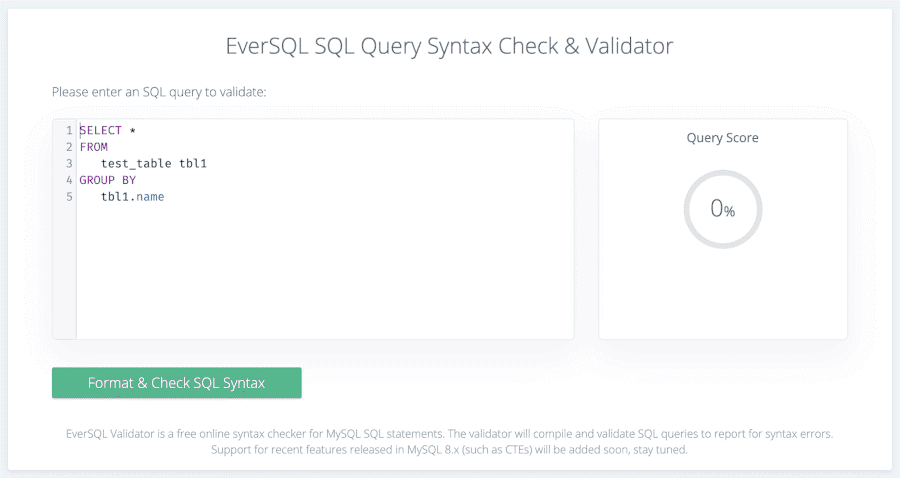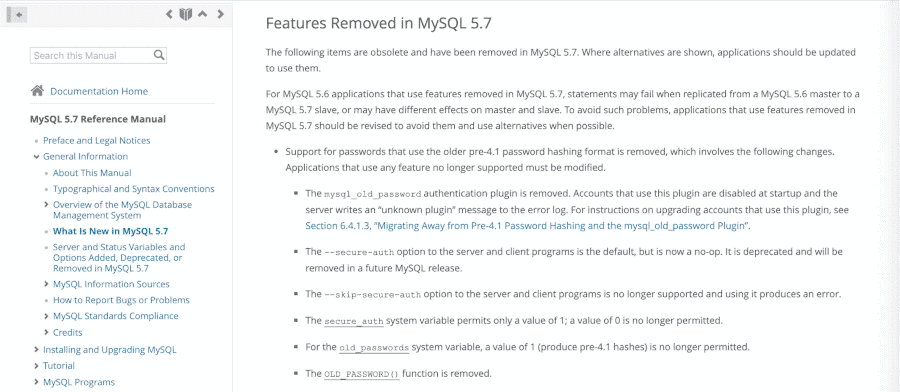MySQL Error Code 1064
Introduction:
In case you've been associated with WordPress for quite a while, you could have decided to get into additional created data set administration. This now and again incorporates using the MySQL command line, which can, subsequently, lead to confounding issues like MySQL 1064 errors.
Fortunately, while settling this error can be confounding at first a direct result of its various expected causes, its responses will, by and large, be modestly fundamental. At the point when you conclude the reason for the database screw-up you're seeing, you should have the choice to fix it adequately and quickly.
Here, we'll cover the different expected purposes behind the MySQL 1064 slip-up. Then, we'll share deals with any consequences regarding each ordinary situation to help you get your information base and your site back going.
Why the MySQL 1064 Error Occurs:
- The MySQL 1064 error is a grammar mistake. This implies the explanation there's an issue is that MySQL doesn't see what you're requesting that it do.
- In any case, a wide range of circumstances can prompt this sort of miscommunication among you and your data set.
- The easiest reason is that you've committed an error while composing in an order, and MySQL can't grasp your solicitation. On the other hand, you might be endeavoring to utilize obsolete or even out-of-date orders that can't be perused.
- In different cases, you might have endeavored to remember a 'saved word' for one of your orders. Saved words are terms that must be utilized in unambiguous settings in MySQL. If you endeavor to involve them in alternate ways, you'll be confronted with a mistake.
- It's likewise conceivable that a little information is absent from your data set. At the point when you make a solicitation using MySQL, which references information that isn't where it should be, you'll likewise see the 1064 mistake.
- At last, moving your WordPress database to another server can likewise prompt a similar issue.
As may be obvious, there are numerous possible foundations for this issue, which can make it interesting to determine. Except if you're currently moving your information base or making some other move that focuses on a particular reason, you'll probably have to attempt one or two arrangements before you land on the right one. Luckily, not a solitary one of them is too hard to even consider executing, as we'll see straight away.
Step-by-step instructions to Fix the MySQL 1064 Error (5 Strategies):
If you, as of now, have a thought of what's causing your MySQL 1064 blunder, you can avoid down to the goal for your particular circumstance. Be that as it may, if you don't know why the mistake has happened, the least complex methodology is to attempt the simplest arrangement first.
All things considered, we'd recommend trying out the five no-doubt fixes in the accompanying request.
1. Right Mistyped Orders
The beneficial thing about MySQL mistakes is that they're the least complex clarification for language structure issues like the 1064 blunder. Sadly, they can likewise be the most dreary to address. All things considered, the ideal choice is to physically edit your code and search for any slip-ups you might have made.
We propose involving the MySQL manual as a kind of perspective while you do, as such, twofold checking anything you don't know about. As you would envision, this can get pretty tedious, particularly if you've been working in the MySQL order line for some time or, on the other hand, on the off chance that you're new to this undertaking.
An option to physically check your work is to utilize a device like EverSQL:

EverSQL syntax checker
With this arrangement, you can include your MySQL to consequently check for mistakes. Notwithstanding, remember that these stages aren't generally great, and you might, in any case, need to approve the outcomes yourself.
2. Replace Obsolete Commands:
As stages develop and change, a few orders that were helpful in the past are supplanted by additional proficient ones. MySQL is no special case. If you're dealing with your data set following a new update or have referred to an obsolete source during your work, at least one of your orders might be presently not legitimate.
You can verify whether this is the case by utilizing the MySQL Instructional pamphlet. You'll find notices of orders that have been made outdated by each MySQL adaptation in the applicable areas:

Physically eliminating outdated orders
Whenever you've figured out which order is possibly causing the issue, you can just utilize the 'find and supplant' capability to eliminate the out-of-date order and include the new adaptation. For instance, assuming you were utilizing storage_engine and found that it does not work anymore, you could essentially supplant all examples with the new default_storage_engine order.
3. Assign Saved Words
In MySQL, utilizing a saved word inappropriately will bring about a grammar mistake, as it will be deciphered as erroneous. Be that as it may, you can, in any case, utilize held words any way you please by holding them inside backticks, similar to this: 'select'.
Every variant of MySQL has its own saved words, which you can find out about in the MySQL Instructional pamphlet. A fast find and supplant ought to empower you to determine this issue on the off chance that you figure it very well might be causing your 1064 blunder.
4. Add Missing Information
On the off chance that your most recent MySQL question endeavors to reference data in a data set and can't find it, you're going to run into issues. If none of the previous arrangements settles your MySQL 1064 blunder, it very well might be an ideal opportunity to go searching for missing information.
Sadly, this is another arrangement that can be very monotonous and must be finished manually. Everything thing you can manage in this present circumstance is to work in reverse, beginning with your latest question. Check every data set it references and ensure all the right data is available. Then continue toward the following latest question until you come to the one that is feeling the loss of certain information.
5. Use Similarity Mode to Move WordPress Databases
This last 1064 blunder arrangement isn't quite as direct as the others on our rundown. Notwithstanding, if you're relocating your WordPress site to another host or generally moving it to an alternate server, you'll have to find additional ways to try not to bring on some issues with your data set.
The most straightforward arrangement is to utilize a relocation module that incorporates a similarity mode, like WP Move DB:
- WP Migrate DB WordPress plugin
- WP Migrate DB WordPress plugin
This will empower an auto-identification highlight that will ensure your most recent site reinforcement and data set are viable with numerous variants of MySQL. You can get to the similarity mode setting by exploring Instruments > Move DB > High-level Choices:
- WP Migrate DB settings
- WP Migrate DB settings
Look at the case close to Viable with more seasoned variants of MySQL before beginning your site relocation. Along these lines, you ought to have the option to avoid any issues during the interaction.
Conclusion:
Database errors can mess up your arrangements, and you may try and think twice about the site's soundness. Knowing how to determine issues, for example, the MySQL 1064 mistake, can assist you with responding rapidly and limit free time on your site.
There are five strategies you can attempt to fix the MySQL 1064 blunder when you experience it, contingent upon its most probable reason:
- Right mistyped orders.
- Supplant out-of-date orders.
- Assign held words.
- Add missing information.
- Move WordPress data sets in similarity mode.